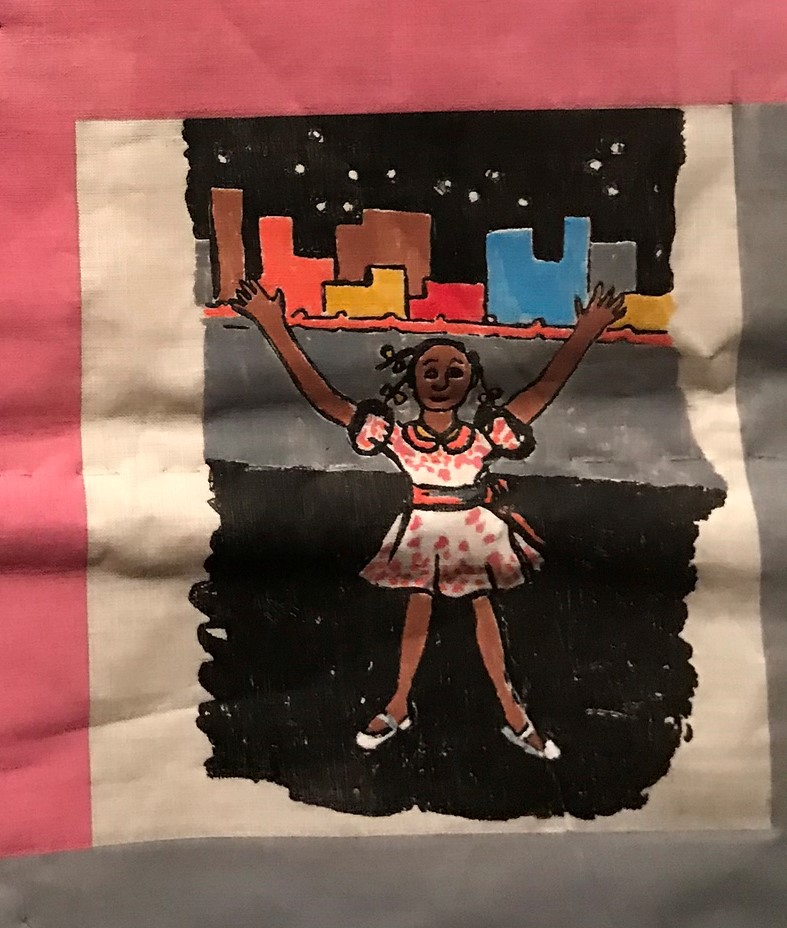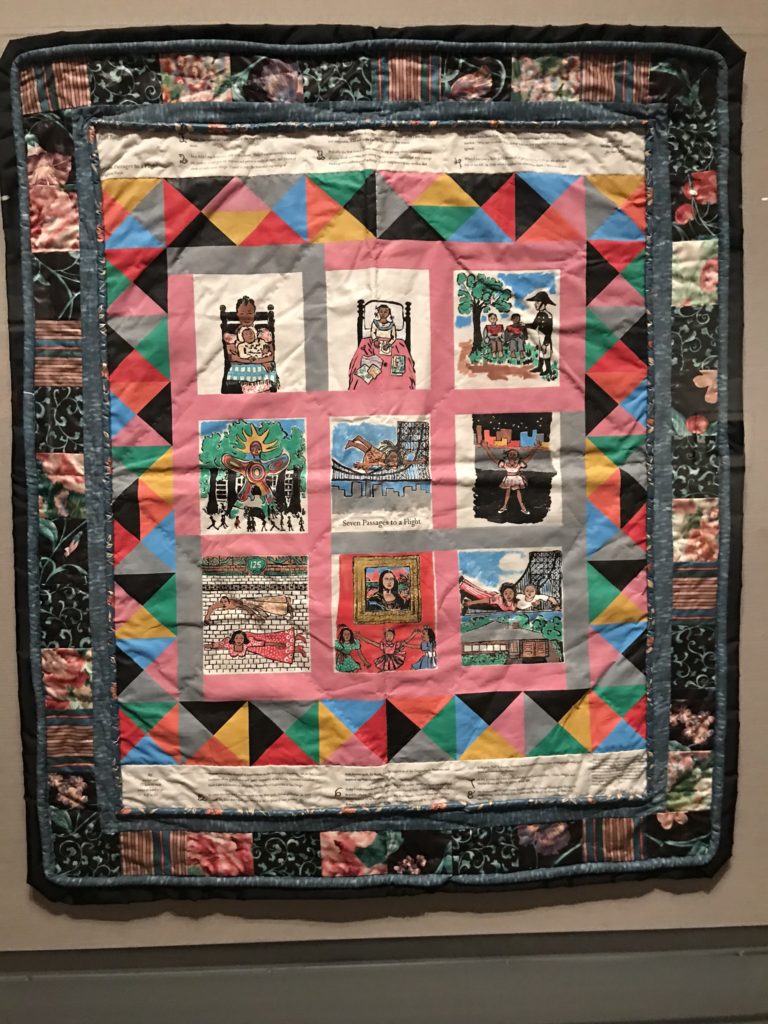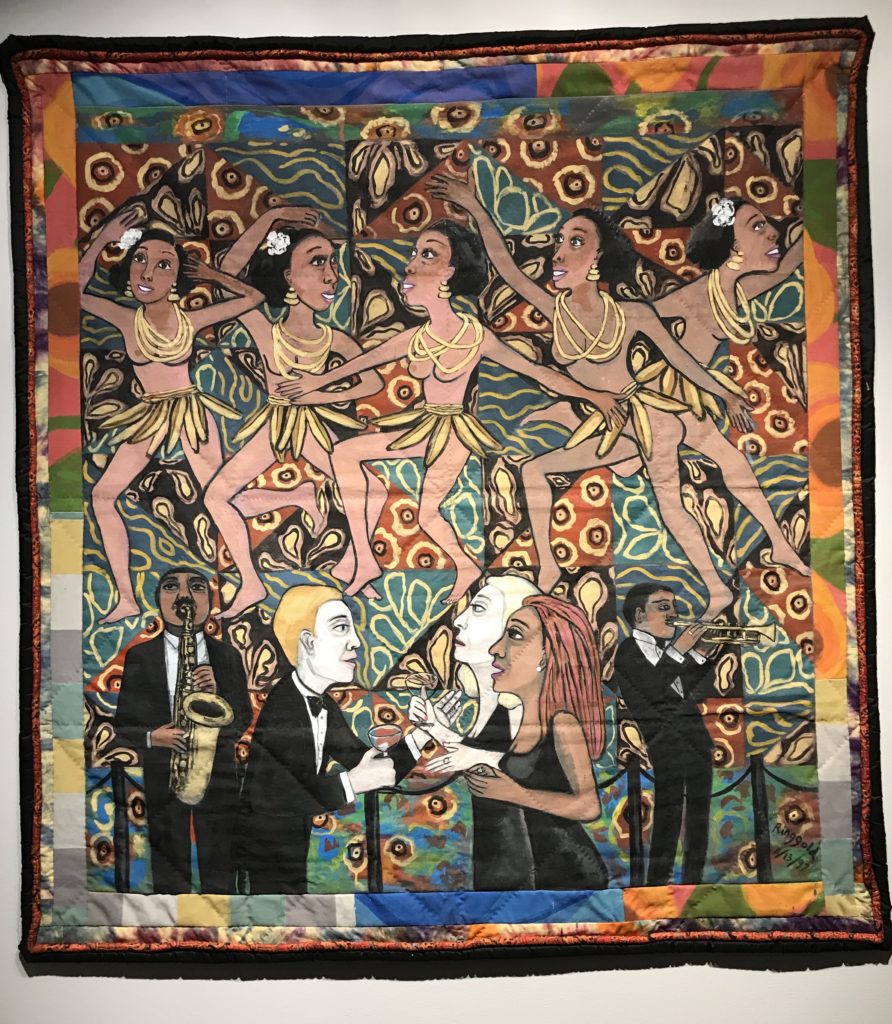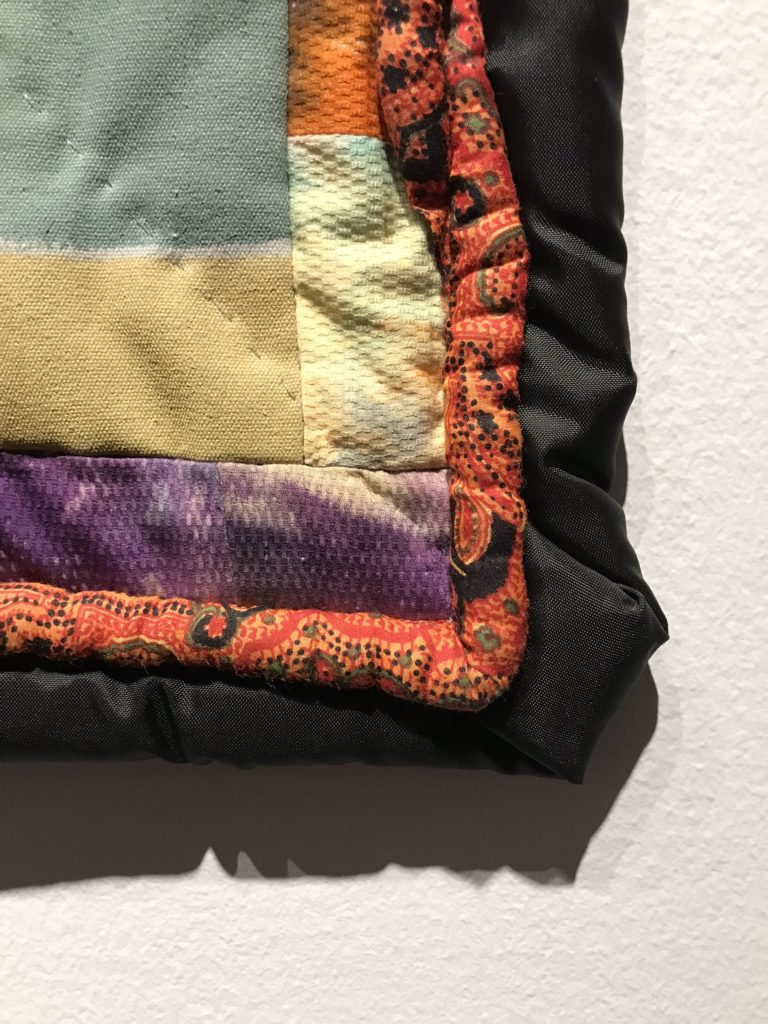Faith Ringgold

When my children were young, reading before bedtime was a cherished ritual. I have three children and I would start by reading a book to my youngest, then my oldest (they shared a room), then move on to the middle child, who didn’t seem to need as early a bedtime. My kids are each just shy of three years apart in age, so the books tended to be different reading levels. But there were nights when all three of the kids would crowd on one bed to listen to a story. One of the books that captured all our attention was Tar Beach by Faith Ringgold. At the time, we just thought it was a great story with interesting illustrations. Who didn’t want to have the ability to fly like Cassie? Who didn’t want to have late night picnics with neighbors? Ours was a textbook middle-class upbringing, with none of the struggles so clearly laid bare in this book; all my kids saw was a young girl who had a powerful imagination.

I grew up outside of Philadelphia, and my only experiences with quilts were from the Amish and Mennonite traditions on display at farmer’s markets and hanging on clotheslines in backyards. Perfect lines and corners, traditional patterns, solid colors. That’s how I defined a quilt for many years. Faith Ringgold opened my eyes and expanded my quilt horizons.
I had the pleasure of seeing the “Eye to I: Self-Portraits from 1900 to Today” exhibition at the National Portrait Gallery. As I was wandering around the museum my eyes were drawn to a colorful display and as I got closer, I recognized Cassie Louise Lightfoot, the 8-year-old protagonist of Tar Beach. The artistry and imagery of Faith Ringgold are unmistakable.

Her self-portrait was a “story quilt,” an intricate narrative painting with carefully crafted patchwork and handwritten text, bordered with fabric. Telling stories through quilts is a style she developed after coming to the realization that the publishing industry was uninterested in telling stories of the black experience. She grew up in Harlem during the Harlem Renaissance. Her neighbors included the likes of Duke Ellington, Langston Hughes and Sonny Rollins.

Her quilts are full of images of family life, relationships, jazz, race, and the history of slavery in America. The pictures are realistic, but stylized, and the people and objects represent real memories of her life. She uses flight as a metaphor for overcoming challenges and the George Washington Bridge symbolizes opportunity. “Anyone can fly. All you have to do is have somewhere to go that you can’t get to any other way.”

A couple of months later, I visited the National Museum of Women in the Arts, where I found another example of Faith Ringgold’s work. Jo Baker’s Bananas is a joyful celebration of the life of Josephine Baker. The five overlapping images of Baker evoke motion, like she is dancing across the quilt. All five Josephine Bakers are happy, and so too are the musicians and audience members.

I don’t imagine I’ll ever get to Paris to see the Mona Lisa or to Rome to see the Sistine Chapel in person. I have to settle for seeing images of these works in books, movies and online. I can enjoy their beauty, but I can’t see the textures, the swirls of paint on the canvas. It’s a two-dimensional experience. But when you see something in person, it grabs you, it makes your senses light up in a more visceral way and allows you to experience art in a more meaningful way. These quilts are definitely three dimensional. I really enjoy the images of life in Harlem in the 30’s, the bold colors and the social commentary, but I also can see the the individual stitches on these quilts, I can watch how they move with air in the gallery, how they are not hanging flat against the wall. I so admire both the art and craft of these works.
I’m not an artist, so I can’t imagine the work that goes into these pieces, but I do make quilts, so I have some idea of the work that is involved in building and finishing a quilt. My least favorite part of the quilting process is the binding. I learned how to do it one way, and I use that method for every quilt. It’s a means to an end; if you don’t bind it, it’s not really a quilt. But I noticed the binding on Faith Ringgold’s quilts are not merely the last step before a job well done. She binds with interesting fabrics and colors, and she layers her bindings to almost create a picture frame for the work. Her bindings are joyful, playful, and add yet another dimension to the work.

I’m looking forward to seeing as many of Faith Ringgold’s works as I can, both for the beauty, but also to inspire me to be less rigid in my own quiltmaking.
